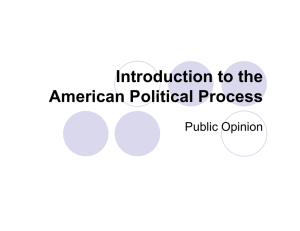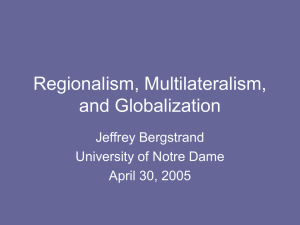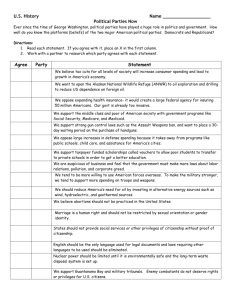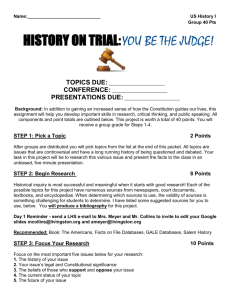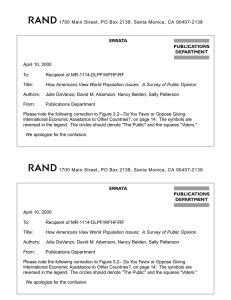Stat 101 – Lecture 25 Another Example
advertisement
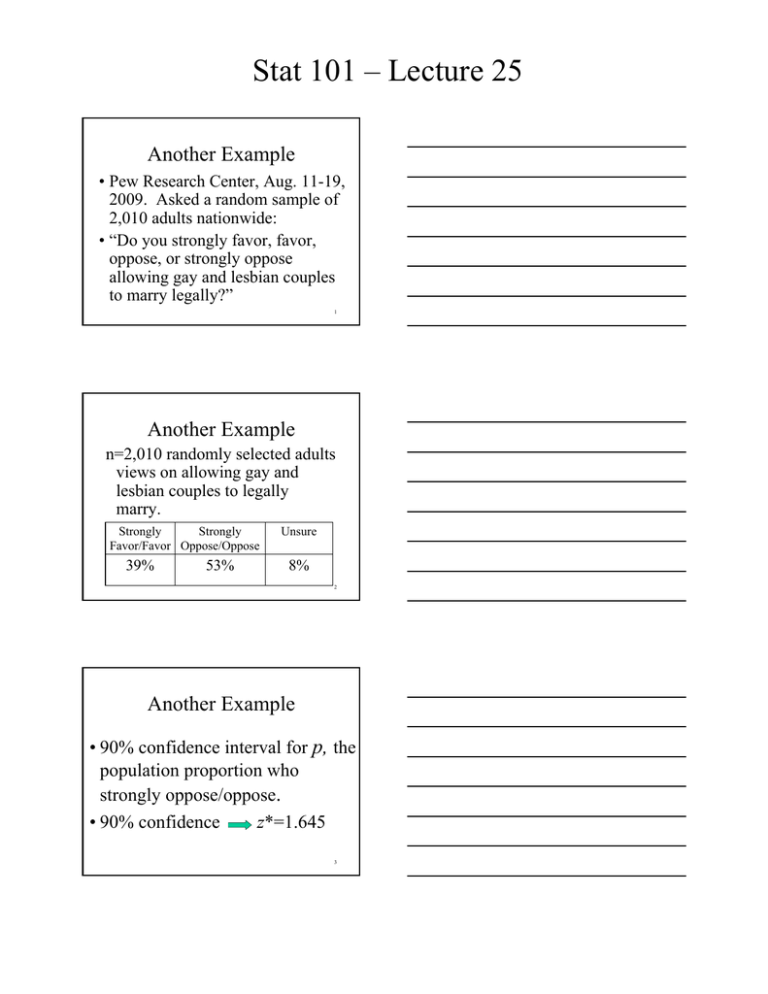
Stat 101 – Lecture 25 Another Example • Pew Research Center, Aug. 11-19, 2009. Asked a random sample of 2,010 adults nationwide: • “Do you strongly favor, favor, oppose, or strongly oppose allowing gay and lesbian couples to marry legally?” 1 Another Example n=2,010 randomly selected adults views on allowing gay and lesbian couples to legally marry. Strongly Strongly Favor/Favor Oppose/Oppose 39% 53% Unsure 8% 2 Another Example • 90% confidence interval for p, the population proportion who strongly oppose/oppose. • 90% confidence z*=1.645 3 Stat 101 – Lecture 25 Another Example pˆ = 0.53 SE( pˆ ) = 90% confidence pˆ (1 − pˆ ) = 0.0111 n z* = 1.645 0.53 − 1.645(0.0111) to 0.53 + 1.645(0.0111) 0.53 − 0.018 to 0.53 + 0.018 0.512 to 0.548 4 Another Example • Note that according to this confidence interval, a majority of all adults (i.e. more than 50% of all adults) in the U.S. strongly oppose or oppose allowing gay and lesbian couples to marry legally. 5 What Sample Size? • Conservative Formula –The sample size to be 95% confident that p̂ , the sample proportion, will be within ME of the population proportion, p. n= 1 ME 2 6 Stat 101 – Lecture 25 Example • Suppose we want to be 95% confident that our sample proportion will be within 0.01 of the population proportion. n= 1 ME 2 ⇒n= 1 (0.01)2 = 10,000 7 Sample Size • More general formula for sample size. (z *) n= pˆ (1 − pˆ ) ME2 2 8 Sample Size • Gay and lesbian marriage example. ME = 0.01 with 95% confidence. n= (z *)2 pˆ (1 − pˆ ) = (1.96)2 (0.53)(0.47) ME2 (0.01)2 n = 9,570 9

